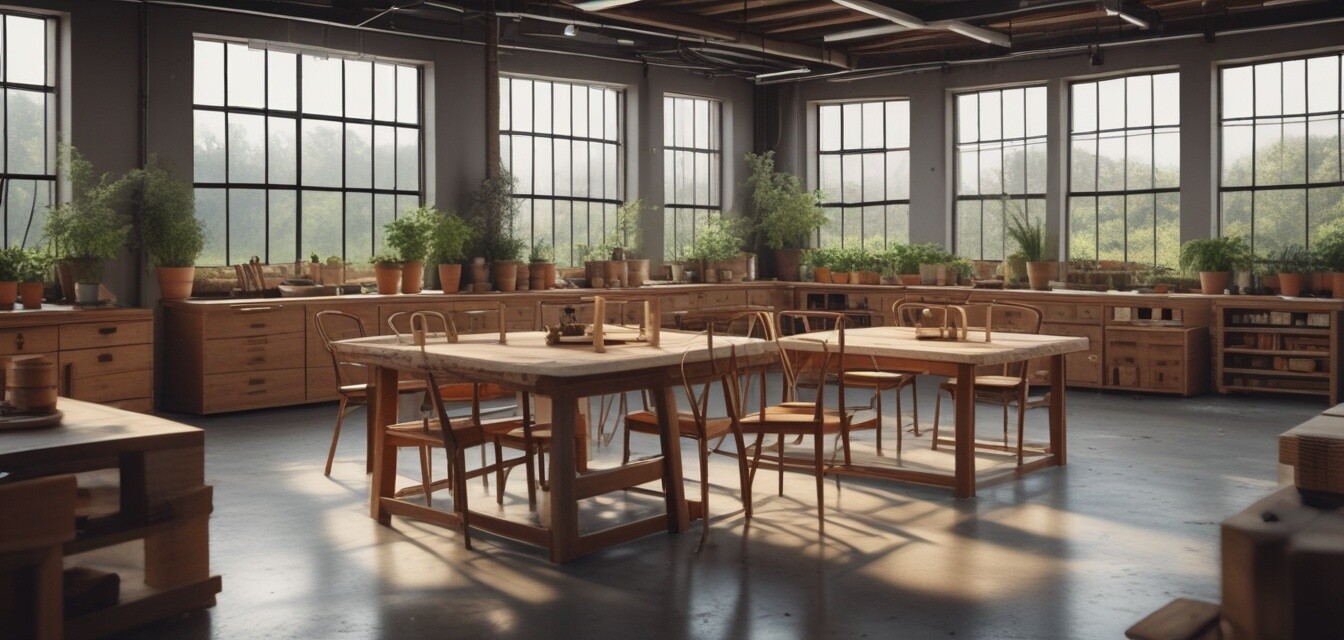
The Importance of Transparency in Furniture Manufacturing
Key Takeaways
- Transparency in manufacturing improves consumer trust.
- Sustainability practices are increasingly demanded by consumers.
- Clear communication about materials and processes is essential.
- Innovative technologies are enhancing transparency in the furniture industry.
- Being environmentally conscious can lead to competitive advantages.
The demand for eco-friendly furniture is growing rapidly as consumers become more aware of the impact their purchases have on the environment. This shift has brought transparency in the manufacturing process to the forefront. Understanding how furniture is made, what materials are used, and the overall sustainability practices of a company can significantly influence consumer buying decisions. In this article, we will explore how transparency shapes the furniture industry and why it is essential for both manufacturers and consumers.
Growing Consumer Demand for Transparency
In today's market, consumers are increasingly prioritizing sustainable practices when choosing furniture. This shift is evidenced by a surge in demand for eco-friendly furniture. Transparency in manufacturing processes allows customers to make informed choices and fosters trust between them and the manufacturer.
Impact of Information Availability
Access to information about manufacturing processes gives consumers insight into six core aspects:
| Aspect | Description |
|---|---|
| Material Sourcing | Consumers want to know where and how materials are sourced to ensure they are sustainable. |
| Labor Practices | Fair labor practices increase consumer trust and promote ethical consumption. |
| Production Processes | Understanding how furniture is manufactured can reveal its environmental impact. |
| Recyclability | Information about the recyclability of a product helps consumers dispose of it responsibly. |
| Certifications | Third-party certifications can validate claims made by manufacturers about their green practices. |
| Product Lifespan | Knowing the durability of furniture aids consumers in making long-term investments. |
Sustainable Practices and Transparency
Transparency has a direct correlation with sustainable practices. When companies are open about their processes, they often implement greener practices. This can lead to a boost in brand loyalty and customer retention.
Examples of Sustainable Practices
Here are some sustainable practices that manufacturers might adopt to promote transparency:
- Using reclaimed or recycled materials for production.
- Implementing energy-efficient manufacturing processes.
- Regularly assessing the carbon footprint of their operations.
- Engaging in ethical labor practices and fair trade.
- Providing clear information on the environmental impact of products.
Innovative Transparency Technologies
The rise of technology has also played a significant role in enhancing transparency in furniture manufacturing. Innovative solutions allow companies to track and report their production processes effectively.
Technologies Supporting Transparency
Several technologies that are promoting transparency in the furniture industry include:
| Technology | Function |
|---|---|
| Blockchain | Ensures traceability of materials from source to finished product. |
| Augmented Reality | Allows consumers to see the production process and materials used. |
| Smart Labels | Provide detailed information about the product's lifecycle. |
| Sustainability Apps | Enable consumers to compare and monitor the sustainability of various brands. |
The Future of Furniture Transparency
The furniture industry is at a pivotal moment when it comes to transparency and sustainability. As consumer behavior shifts toward demanding greater accountability, manufacturers must be prepared to adapt to these changes.
Implications for Manufacturers
Companies that embrace transparency can expect to strengthen their brand reputation and create a loyal customer base. This is not only beneficial for business but also contributes to a more sustainable future.
Pros
- Builds consumer trust and loyalty.
- Increases brand visibility in a crowded market.
- Encourages responsible consumption.
Cons
- Requires investment in tracking and reporting systems.
- May expose shortcomings in practices if not managed well.
Conclusion
The importance of transparency in furniture manufacturing cannot be overstated. Not only does it cater to the growing demand for sustainable practices, but it also fosters trust with consumers who prefer to know where and how their furniture is made. As we continue to move towards a greener future, the industry must embrace transparency and advocate for sustainable practices to thrive in the evolving market. For more insights into eco-friendly furniture options, consider checking our buying guide section.
Stay Informed on Trends
To keep up with the latest developments in sustainable furniture, explore our news and trends section. Staying informed on these matters not only benefits you as a consumer but also helps promote a more sustainable future.